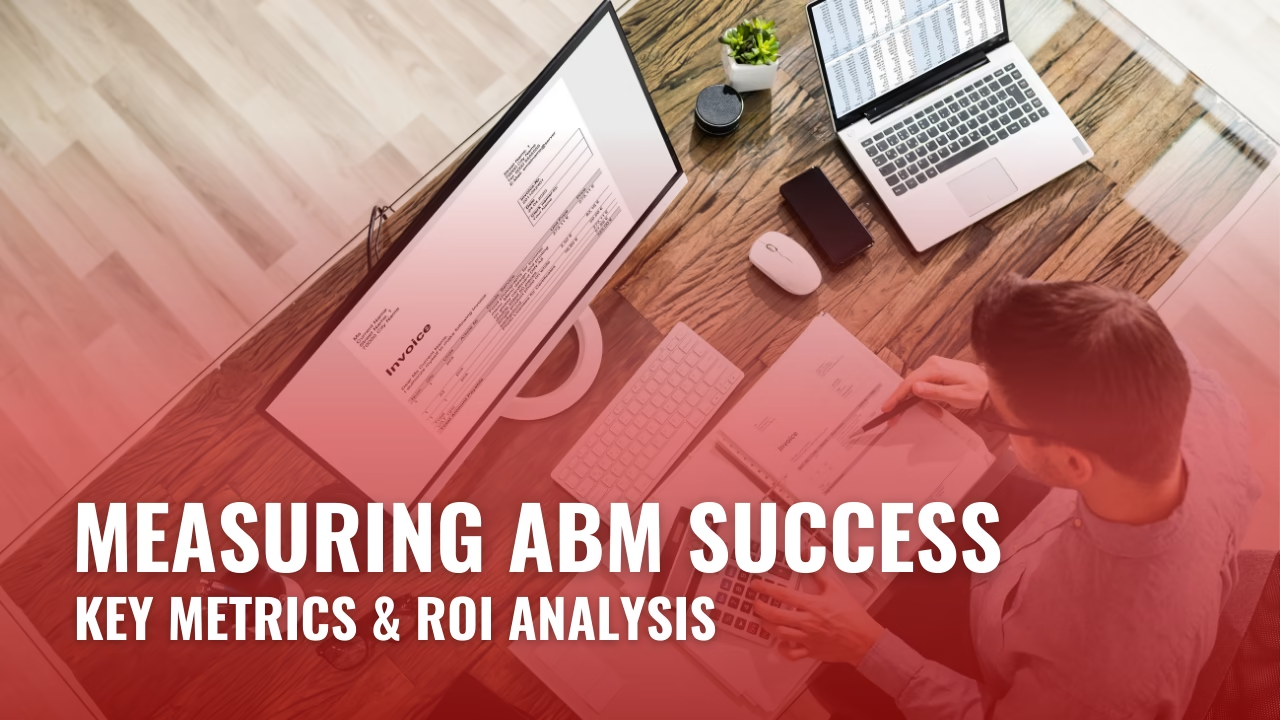Introduction
Account-Based Marketing () targets high-value accounts rather than broad leads. Measuring its success requires tracking key metrics to ensure a positive return on investment (ROI). This article outlines essential metrics and best practices for maximizing efficiency.
Key ABM Metrics
1. Account Engagement
Measures interaction with your marketing efforts:
- Email open/click rates
- Content downloads
- Website visits
- Social media interactions
2. Pipeline Velocity
Tracks how quickly leads move through the sales funnel: Velocity=(Opportunities∗DealValue∗WinRate)/SalesCycleVelocity = (Opportunities * Deal Value * Win Rate) / Sales Cycle
3. Account Penetration
Evaluates engagement within a target account:
- Decision-makers engaged
- Meetings per account
- Internal referrals
4. Customer Acquisition Cost (CAC)
Determines marketing and sales costs per new customer.
5. Customer Lifetime Value (CLV)
Estimates total revenue a customer generates.
6. Marketing & Sales Qualified Accounts (MQAs & SQAs)
Identifies engaged accounts likely to convert.
7. Win Rate
Percentage of opportunities resulting in closed deals.
8. Return on Investment (ROI)
Formula: ROI=(Revenue−Investment)/InvestmentROI = (Revenue – Investment) / Investment
Since ABM typically involves higher upfront costs (custom content, multi-channel campaigns, tech tools), measuring Return on Investment (ROI) is essential to justify efforts and scale strategies that deliver the most value.
Best Practices
1. Align Sales & Marketing
Regular collaboration ensures consistent targeting and messaging.
2. Use Analytics Tools
Platforms like HubSpot and Salesforce track ABM performance in real-time.
3. Optimize Continuously
Monitor performance and adjust strategies for better engagement.
4. Leverage Predictive Analytics
AI-driven insights help identify high-potential accounts.
5. Personalize Content & Engagement
Tailored messaging across multiple channels increases effectiveness
Account commitment
Tracking commitment to target accounts is a core ABM success calculation.
What to measure:
Visit the site with target accounts
Open the E -post and click on the prices
Time spent on pages with high enterant
Interaction to social media
Why it does matter:
Higher connection to the decision makers resonate your message and your account is being heated.
- Pipeline speed
The pipeline speed measures how quickly sales use through the funnel.
Formula:
Pipeline speed = (number of options × average appointment size × victory)) Sales cycle length
Why it does matter:
This marketing reflects both quality and sales efficiency – rapid speed often leads to better returns.
- Deal size and winning rate
ABM usually results in size with large agreements and high winning rate due to personal attention and strategic adaptation.
What to track:
Average contract price per account
The percentage of target accounts converted to customers
insight:
If the ABM agreement is larger or more profitable than non-ABM agreements, your strategy works.
- Customer collection cost (CAC)
CAC shows how much you spend to get an account.
Formula:
CAC = total marketing and sales expenses to obtain the number of new customers
ABM adaptation tips:
Although CAC may be higher in ABM, make sure that the lifetime value (LTV) justifies investment.
Internal link: Learn how to customize CAC in B2B marketing
- Marketing Account (MQAS)
MQA’s accounts that meet predetermined engagement and fit criteria.
Key indicators:
Repeated trips from many decision makers
Intention signal (eg Material Download, Demo Request)
Scoring threshold based on company and behavior
How to Calculate ABM ROI
to justify
Why it’s important:
Tracking MQAs helps to coordinate sales and marketing and increase the accuracy of the pipeline.ABM (Account-Based Marketing) targets specific accounts with personalized campaigns. Unlike traditional lead-based marketing, ABM focuses on quality over quantity.
conclusion
Measurement of ABM’s success is not just about collecting data – it is about gathering action -rich insights that help to refine your attitude. By tracking matrix as an account engagement, pipeline speed, agreement value and ROI, the markets can fix campaigns to produce better results.
A strategic ABM campaign supported by strong matrix ensures better adjustment between marketing and sales, high returns and long -term customer relationships. Be aware of quality insights on vanity calculations and allow the data to direct your next move.





